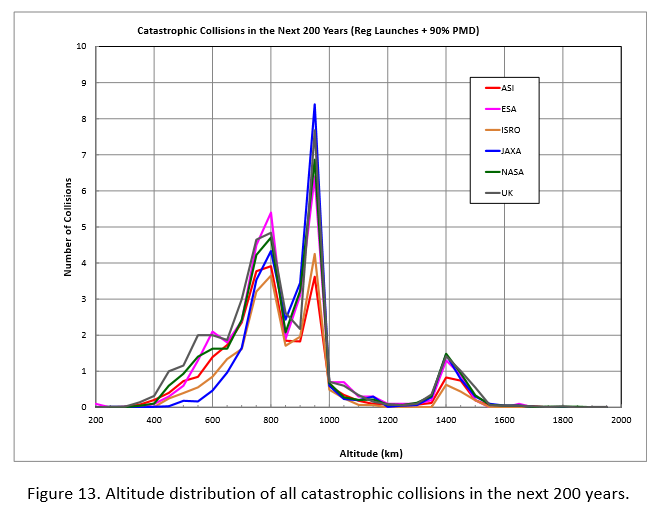I think this is in the category of problems that should certainly not be ignored, but which is far from a cause for panic.
Right now, the amount of human-created space debris appears to be slightly less than naturally-occurring meteoroids. So basically we've doubled the problem, which I guess is bad, but it's not like we've multiplied it by 100.
The total amount of space debris is not that great. Using the NASA report that HDE226868 helpfully linked to, today there are about 10 objects of size 10 microns or greater per cubic kilometer of space, and one of size 100 microns or greater. It's not like any object in space is being pelted with debris.
Orbital debris cleans itself up naturally. Orbits tend to decay, and then the object falls into the atmosphere and, usually, burns up long before hitting the ground.
In practice: To quote NASA's website regarding space debris and the International Space Stations:
The U.S. Space Surveillance Network regularly examines the trajectories of orbital debris to identify possible close encounters. If another object is projected to come within a few kilometers of the International Space Station (ISS), the ISS will normally maneuver away from the object if the chance of a collision exceeds 1 in 10,000. This occurs infrequently, about once a year on average.
(http://orbitaldebris.jsc.nasa.gov/faqs.html)
(Other relevant info on that page, BTW.)
There was a collision in 2009 between an American communications satellite, Irridium 233, and an out-of service Russian military satellite, Kosmos 2251, in which both were destroyed.
The French CERISE satellite was badly damaged by a collision with debris in 1996.
These are the only cases I could find of a collision with space debris causing serious damage. It's possible that other failures whose cause is unknown were due to space debris. So is it a problem? Yes. Is it a crisis at this time? No.
I think the chance that we would blockade ourselves on the surface is virtually zero. The major countries active in space today are taking steps to reduce the amount of new debris created. If it got to the point of being a serious problem, we could take steps to collect debris, destroy it with lasers, etc. It could certainly be a difficult and expensive problem, but not an unsolvable one.



